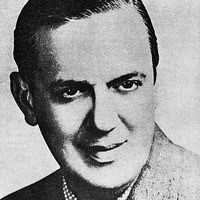Havana (Cuba), 1895 – Tenerife/Ilhas Canárias (Espanha), 1963
By Ángel G. Quintero Rivera
The most internationally renowned Cuban composer of all time also stood out as a pianist and conductor. He represents the great tradition of versatility in Hispanic-Caribbean popular music, excelling in various genres, including “classical” music. His set of Afro-Cuban dances for piano is probably the most stylized melodic rendition of various rhythms from the Afro-American heritage: the conga, the lucumí dance, and, above all, the famous Comparsa.
Lecuona’s compositions were recorded at different times and in a wide variety of formats. Among the pieces marked by the African legacy, we can also mention his classics “Siboney,” “Canto karabalí,” “Tabu,” and “Babalú” (erroneously attributed to his niece Margarita, the singer), among many others. He also composed some of the most well-known “Spanish” songs of all time, such as “La malagueña” and “Andalucía” (which the BMI copyright company attests to having been performed over one million times). Also famous are waltzes like “Crisântemo,” habaneras, mazurkas, and Cuban dances; as well as the most well-known Caribbean zarzuelas – “Maria la O” and “El cafetal” – operettas, ballets, and music for a dozen productions in the film industry in Mexico, Buenos Aires, Havana, and Hollywood (in 1942, he was nominated for the Oscar for Best Song).
Lecuona formed the Havana Symphony Orchestra with Gonzalo Roig and later created one of the first Latin American popular orchestras to achieve success in the United States and Europe: the Lecuona Cuban Boys, who caused a sensation during the 1930s. “Rapsodia negra” is his best-known orchestral composition. Due to the Cuban Revolution, he exiled himself to New York. His ambivalence between “the classical” and “the popular,” his condition as an exile, and his homosexual inclinations made it difficult to recognize his enormous importance to tropical sound.



